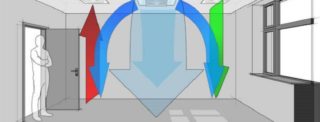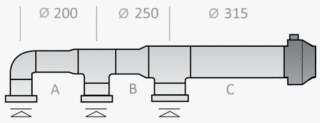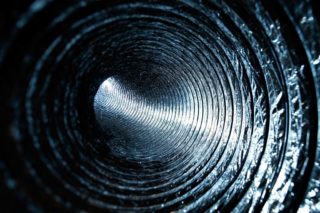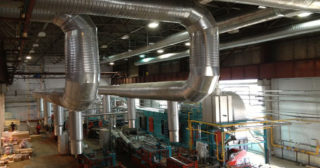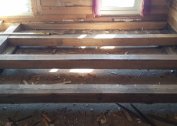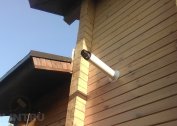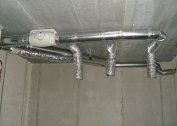On the basis of sanitary-hygienic and construction standards, each object, both residential and industrial, should be provided with a ventilation system. The created microclimate affects the performance and health status of people. To ensure comfortable living conditions, special standards have been developed that determine the composition of the air.
The importance of air exchange
The task of any ventilation is to provide the optimal microclimate, humidity level and air temperature in the room. These indicators affect the well-being of a person during the work process and rest.
Poor ventilation leads to the multiplication of bacteria that cause respiratory infections. Food begins to deteriorate quickly. An increased level of humidity provokes the appearance of fungus and mold on walls and furniture.
Fresh air can enter the room in a natural way, but to achieve compliance with all sanitary and hygienic indicators is possible only with a high-quality ventilation system. It should be calculated for each room separately, taking into account the composition and volume of air, design features.
For small private houses and apartments, it is enough to equip mines with natural circulation of air flows. But for industrial premises, large houses, additional equipment is required in the form of fans, which provide forced circulation.
When planning the building of an enterprise or public institution, the following factors must be taken into account:
- good ventilation should be in every room;
- it is necessary that the composition of the air meets all approved standards;
- enterprises require the installation of additional equipment that will regulate the air velocity in the duct;
- for the kitchen and bedroom, it is necessary to mount different types of ventilation.
In order for the air exchange system to meet all the requirements, it is necessary to calculate the air velocity in the duct. This will help you choose the right device.
Rules for determining the air velocity in the duct
The air flow rate in ventilation is directly related to the level of vibration and noise in the system. These metrics must be considered when calculating behavior. The movement of air mass creates noise, the intensity of which depends on the number of pipe bends. Resistance also plays a large role: the higher it is, the lower the speed of air mass movement will be.
Noise levels
Based on sanitary standards, the maximum possible sound pressure indicators are set in the premises.
Exceeding these parameters is possible only in exceptional cases, when you need to connect additional equipment to the system.
Vibration level
During operation of any ventilation device, vibration is produced. Its performance depends on the material of which the duct is made.
Maximum vibration depends on several indicators:
- quality gaskets that are designed to reduce vibration;
- pipe manufacturing material;
- duct size;
- air flow rate.
General indicators cannot be higher than established by sanitary standards.
Air exchange rate
Purification of air masses occurs due to air exchange, it is divided into forced and natural. In the second case, it is achieved by opening windows, windows, in the first through the installation of fans and air conditioners.
For an optimal microclimate, air changes should occur at least once per hour. The number of such cycles is called the rate of air exchange. It must be determined in order to establish the air velocity in the ventilation duct.
The calculation of the multiplicity is made according to the formula N = V / WwhereN - multiplicity per hour; V - the volume of air that fills a cubic meter of space per hour; W - the volume of the room in cubic meters.
Algorithm and formulas for calculating air velocity
The calculation of air flow can be done independently, taking into account the conditions and technical parameters. To calculate, you need to know the volume of the room and the rate of multiplicity. For example, for a room of 20 square meters, the minimum value is 6. Using the formula gives 120 m³. This is the volume that must move through the channels within an hour.
The speed in the duct is calculated based on the parameters of the cross-sectional diameter. To do this, use the formula S = πr² = π / 4 * D²where
- S - cross-sectional area;
- r - radius;
- π - constant 3.14;
- D - diameter.
Once there is a known cross-sectional area and air flow, its speed can be calculated. To do this, use the formula V = L / 3600 * S, where:
- V - speed m / s;
- L - consumption m³ / h;
- S is the cross-sectional area.
Noise and vibration parameters depend on the speed in the duct cross section. If they exceed acceptable standards, you need to reduce the speed by increasing the cross section. To do this, you can install pipes from another material or make the curved channel straight.
Air flow calculation
It is important to correctly calculate the cross-sectional area of any shape, both round and rectangular. If the size is inappropriate, it will be impossible to achieve the right air balance. An air duct that is too large will take up a lot of space. This will reduce the area in the room, causing discomfort to residents. If the calculation and selection of a very small channel size is incorrect, strong drafts will be observed. This is due to the strong increase in air pressure.
Section calculation
To calculate how fast air will flow through the pipe, you need to determine the cross-sectional area. The following formula is used for calculation S = L / 3600 * V, Where:
- S - cross-sectional area;
- L - air consumption in cubic meters per hour;
- V - speed in meters per second.
For round ducts, it is necessary to determine the diameter by the formula: D = 1000 * √ (4 * S / π).
If the duct is rectangular, and not round, instead of the diameter, you need to determine its length and width. When installing such an air duct, an approximate section is taken into account. It is calculated by the formula: a * b = S, (a - length b - width).
There are approved standards according to which the ratio of width to length should not exceed 1: 3. It is also recommended to use tables with typical sizes, which are offered by manufacturers of air ducts.
Round ducts have an advantage. They are characterized by a lower level of resistance, so when the ventilation system is operating, the noise and vibration levels will be minimized.
Duct material and cross-sectional shape
Round ducts are most often used in large enterprises. This is due to the fact that their installation requires many square meters of floor space. Rectangular sections are most suitable for residential buildings; they are also used in clinics and kindergartens.
Most often, steel is used to make pipes. For a round section, it should be elastic and hard, for a rectangular one, softer.Pipes can be made of textile and polymeric materials.
The right choice of ventilation pipes
Before designing a ventilation system, all indicators of speed, noise and vibration must be taken into account. It is necessary to make calculations taking into account the area of the room in order to ensure high-quality air exchange. A large role in the selection is also played by the material of manufacture.
The most versatile are the ducts of their galvanized steel. They can be operated at high temperatures and pressures. They can be used for any climatic zones.
In industry, black steel ducts are most often used. They are heat and flame resistant, but subject to severe corrosion.
A high degree of flexibility, strength and elasticity is possessed by an aluminum corrugated duct. The material is resistant to high temperatures. But this duct has a drawback. Due to the high aerodynamic drag, loud noise occurs during operation.
High durability, long life and ease of installation are distinguished by plastic ducts. They are popular due to their low cost and low weight. The downside is the low resistance to high temperatures.
Polyisocyanurate pipes are often installed in residential buildings. They are characterized by high fire safety properties, long life, ease of installation.
Recommended Speed
When designing any building, you need to calculate the ventilation wiring for each site separately. If we are talking about the construction of an industrial building, the calculation should cover all the workshops, for residential buildings, schemes are drawn up for each apartment, floor blocks should be drawn up for a private house.
Before starting the installation of the ventilation system, it should be known what the routes and sizes of the mains will be, the geometry of the ventilation ducts has been worked out. All this is necessary to choose the optimal pipe size.
It is very difficult to make calculations of the movement of air masses in residential and industrial buildings. Therefore, it is recommended to entrust this to specialists.
When designing and commissioning any object, the orientation goes to the recommended speed in the duct, which is approved by SNiP. Based on the standards, the indoor air speed should not be more than 0.3 m / s. Temporary exceptions are possible due to technical work. For example, during the repair or installation of construction equipment, the parameters may be higher, but by a maximum of 30%.
For large industrial premises, most often they design not one ventilation system, but two. This is true for warehouses, hangars, large garages. In this case, the load will be divided in half, therefore, the air speed should be selected in such a way as to provide 50% of the total volume of movement of air masses.
It is recommended to install inlet ducts and shutoff valves so that in case of fire it is possible to reduce the speed of movement of air masses to a minimum. This will help prevent smoke from spreading to all neighboring rooms.
